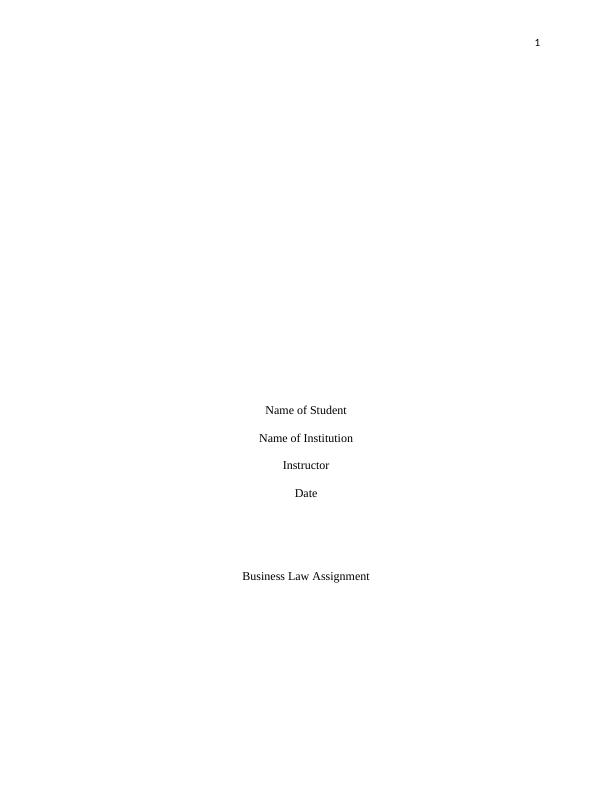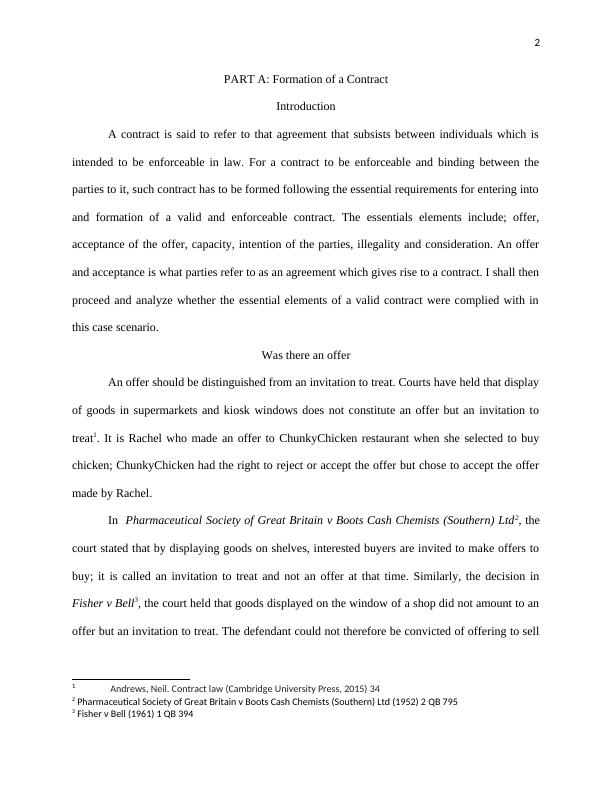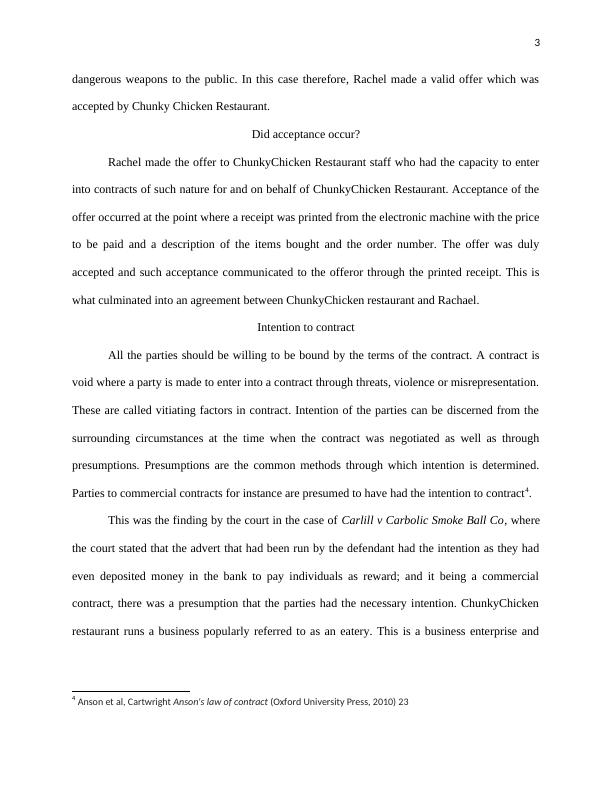Formation of a Contract and Exclusion Clause in Business Law
Write a problem based letter of advice using ILAC methodology on contract construction in business law.
8 Pages2037 Words153 Views
Added on 2023-05-31
About This Document
This article discusses the formation of a valid contract, including offer, acceptance, capacity, intention, illegality, and consideration. It also analyzes the application of an exclusion clause in a standard form contract, using relevant case law.
Formation of a Contract and Exclusion Clause in Business Law
Write a problem based letter of advice using ILAC methodology on contract construction in business law.
Added on 2023-05-31
ShareRelated Documents
End of preview
Want to access all the pages? Upload your documents or become a member.
Date Business Law Assignment
|8
|1822
|54
Business Law Assignment on Contract Formation and Exclusion Clauses
|8
|2033
|484
(BLO1105) Business Law PDF
|8
|1821
|85
Formation of a Valid Contract and Exclusion Clause in Business Law
|8
|1956
|138
BLO1105 Business Law PDF
|8
|1782
|103
Business Law: Contract Formation and Indoor Management Rule
|19
|2211
|302



